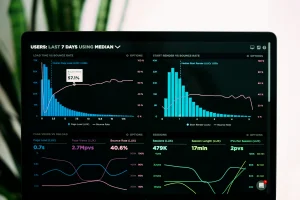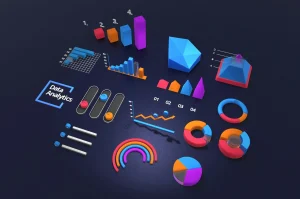Data Visualization: Increasing Efficiency in Data Analysis
When data is presented only in numerical or written form, many people will have difficulty understanding it. Especially if the amount presented is quite large. The information and material in it can only be understood by a select group of data specialists. Therefore, data visualization is one of the tasks carried out by a data analyst. This responsibility is then known as data visualization. This process is as important as the data processing itself.
Understanding the Meaning of Data Visualization

The method of producing a more understandable and clear picture is called data visualization or data presentation. In essence, data visualization is a technique that helps us uncover hidden patterns, trends, or relationships between data by transforming complex data into a simpler and more understandable form.
Data presentation is not just about making statistics look visually appealing. More than that, it helps us to communicate information more effectively and make data easier to understand. In many cases, data presentation can also help in decision making, as it can provide a clearer and more understandable picture of the data being analyzed. Therefore, data presentation becomes increasingly important in the digital age where we generate and collect increasingly large and complex amounts of data.
What are the Functions of Data Visualization?
- Facilitating Data Understanding Data visualization is very useful to help facilitate understanding of complex and diverse business data, such as business data. The advantage of data presentation is its ability to filter important information from the large amount of data available, making it easier for users to find insights quickly and easily remembered.
- Helping to Identify Patterns and Trends Data visualization can help us identify patterns and trends in a data set. In some cases, these patterns and trends may be very difficult to identify in raw data. Data presentation can help by transforming raw data into graphs or charts that are easier to understand. In business data analysis, for example, data presentation can help identify sales trends, increases or decreases in demand, and different consumer behaviors. Data presentation can provide invaluable information in making the right decisions if you identify these patterns and trends.
- Improving the Effectiveness of Data Communication Another function of data presentation is to improve the effectiveness of data communication. The use of visual representations such as graphs, diagrams, tables, or maps, data presentation can help you communicate information more clearly and easily understood. This is especially important in situations where information must be conveyed quickly and effectively, such as in business presentations or financial reports.
5 Types of Data Visualization

- Temporal Temporal is a visual type that shows the results of only one dimension or linear. The characteristics of this type are lines with a beginning and end point. Lines can stand alone but can also intersect with other lines when showing a complete data display. Scatter plot diagrams, time series, timelines and line diagrams are often used in this temporal visual.
- Hierarchy The visual type of hierarchy is useful for showing the relationship between one group and another larger group due to a cause. This type is often used for both business and simple explanations to children such as tree diagrams.
- Network From the name itself, it is clear that visual networks are data that influence one element to another. With directed visual designation, it is easier to explain the relationship between the data. Examples of visuals that are often used in networks are word clouds and Instagram node-links.
- Multidimensional Data that is suitable for multidimensional visuals is data that is full of variables or dimensions. If there is a lot of data, then multidimensional visuals are easier to understand with a simple display even though they are formed from many variables. Multidimensional visuals that are often used are pie charts, stacked-bars and histograms.
- Geospatial Visual Geospatial type provides a complete data overview to present the real form of objects or space. In general, data is related to sales of a region, business growth maps to flow. At first glance, the appearance is similar to a map with certain colors that show data easily. Examples of geospatial are cartographs and heatmaps.
The existence of data visualization is useful for many parties to identify, discuss, and act according to the information/insights they get from the data. With various types of visualizations to choose from, you can convey your findings in an interesting, unique, and easy-to-understand way.

